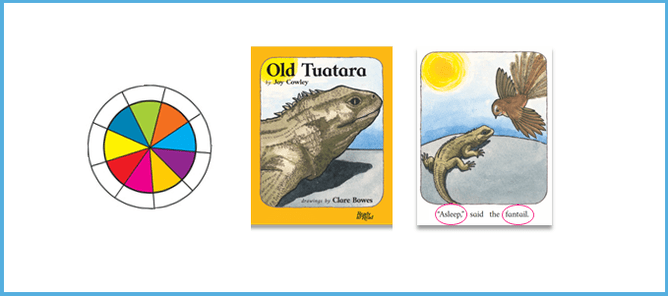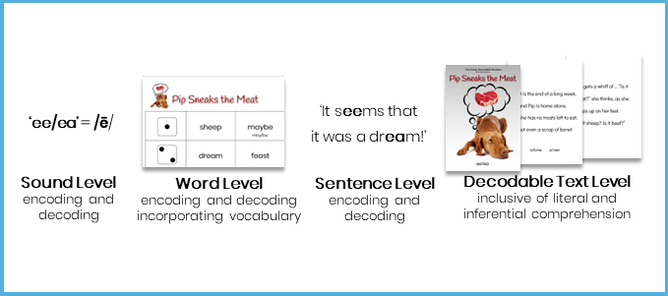Balanced Literacy and Structured Literacy are two distinct approaches to teaching. This blog post aims to summarise each approach, discuss their origins, and explore their methods of instruction. We also delve into what happens when a child first starts school.
Balanced Literacy
Summary: Balanced Literacy combines a Whole Language approach with phonics instruction, predicated on the assumption that children will acquire reading skills by immersing them in books. The focus leans towards understanding meaning rather than accurate reading (decoding).
Origins: Balanced Literacy has its roots in the Whole Language approach, which maintains that learning to read is as natural as learning to speak. As an approach, Balanced Literacy gained popularity in the 1980s. Many teachers have been trained to teach reading using a Balanced Literacy approach.
Teaching Method: A Balanced Literacy approach remains quite fluid in its definition. Consequently, the implementation of this approach may vary among schools and even among teachers. It prioritises reading for meaning and context and places less emphasis on phonics and decoding skills. The teaching of phonics, reading, and spelling more often than not occur in isolated lessons or blocks.
On Entry to School: When a child starts school as a new entrant, they are taken straight to a text in a Balanced Literacy approach. Students are taught to memorise high-frequency (both irregular and phonetic) words through repetition. A child may bring home spelling lists that generally do not incorporate consistent patterns or follow a specific sequence.
They start with the lower texts on the reading colour wheel (generally magenta texts) and advance through levelled readers based on reading levels. Phonics and phonemic awareness may be taught, but not necessarily in a specific order.
Generally, the early books have repetitive sentences and rely on picture cues instead of prompting the reader to actively engage with the text.
Learning Support: In a Balanced Literacy approach, interventions vary. In some cases, there is a lack of alignment between what is being taught in the classroom and what is offered in intervention settings. The Ministry of Education website recommends the teaching of a Structured Literacy approach for dyslexic students. Whilst this aligns with current research, there is no expectation that there will be an alignment of what is taught in classrooms and intervention settings in a Balanced Literacy approach.
Structured Literacy
Summary: Structured Literacy embraces a scientific and evidence-based approach to reading, teaching the structure of language through diagnostic, explicit, systematic, and cumulative instruction.
Origins: Structured Literacy stems from research studies conducted by neuroscientists, cognitive psychologists, linguists and educationalists, called The Science of Reading. Trademarked by the International Dyslexia Association, this approach is recognised as effective for dyslexic students and struggling readers.
Teaching Method: A Structured Literacy approach explicitly teaches all elements of the building blocks of reading success. Instruction is systematic and cumulative, gradually building upon previously taught skills and knowledge. By diagnosing individual needs, teachers follow a scope and sequence that introduces concepts from simple to complex in a logical order, allowing for ample repetition and practice. Ongoing monitoring of progress is conducted throughout the school year using diagnostic and qualitative methods.
A key element of this approach is that teachers teach explicitly, there is a high level of active participation from students during lessons, and it is taught in a way that the student will ‘get it’. Teachers explicitly teach both word recognition and language comprehension skills in a Structured Literacy approach.
On Entry to School: When a child starts school they are assessed on early foundational skills. Teachers utilise the formative data to guide their instruction. They also explicitly teach high-frequency irregular words to emphasise symbol-to-sound relationships that may not be straightforward. Through a Structured Literacy approach, students are first taken to sound level, to word level, to sentence level, and then to text with decodable or controlled texts. Once students reach a certain place in the scope and sequence they transition to authentic or regular texts.
Learning Support: Where students present with neurodiversity such as dyslexia, they are able to continue with their reading development through the use of decodable texts suitable for older readers. Where struggling decoders may read decodable texts to build word recognition skills, they may also be exposed to authentic age-appropriate texts to build language comprehension and increasing knowledge. Intervention is aligned with what is occurring in classroom teaching but is differentiated and intensive.
A Call to Empower Educators
The Science of Reading research emphasises that learning to read is not a natural process. Certain parts of the brain must be activated for successful reading and writing to occur. Some brains activate with ease, while others require more explicit teaching and repetition.
An organised literacy block that consciously teaches all aspects of literacy is used when teaching Structured Literacy. Each skill is taught explicitly, with lesson content dependent on the needs of the students. Spelling is taught explicitly with a reciprocal relationship between the reading and writing of the relevant words. Skills taught during spelling lessons are then reinforced during reading and writing time to assist these being committed to long-term memory. Many exposures lead to instant recall.
In our time-poor education system, we must be savvy about how we spend our instructional time. Currently, it is not mandatory for our trainee teachers to be taught to teach in an evidence-based Structured Literacy approach. They are not taught about the Science of Reading, about how ALL brains learn to read, or the most effective way of supporting students with dyslexia. However, evidence-based practices necessitate a transformation in both how children are taught to read and how teachers are trained to teach reading. Empowering educators with the knowledge of 'WHY' and tools that align with 'HOW' we learn to read, write, and spell is vital for effective instruction and support.









